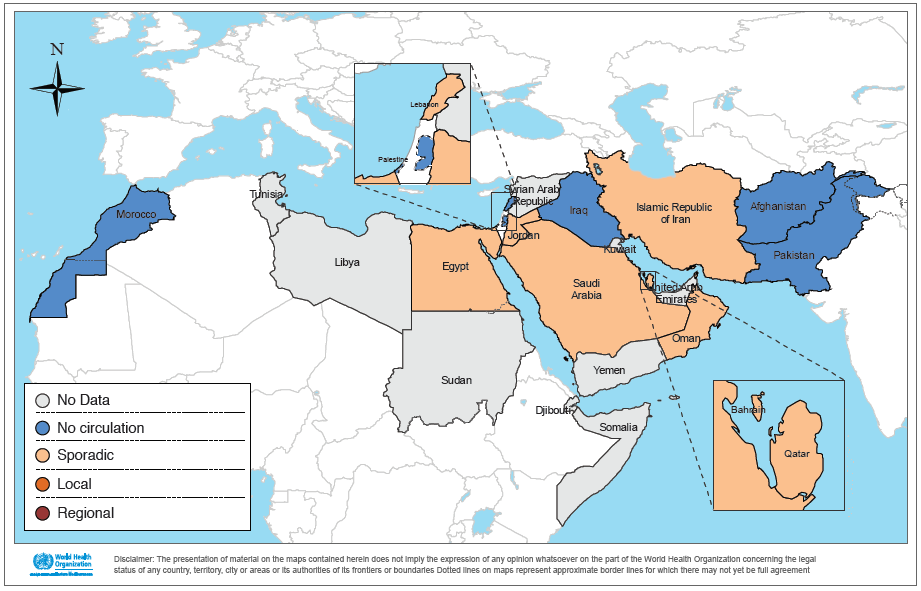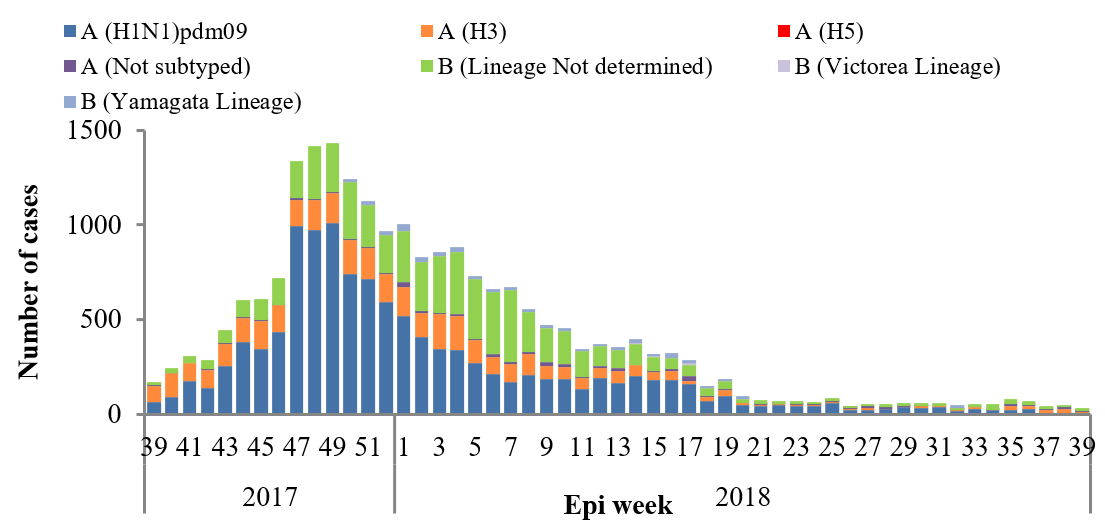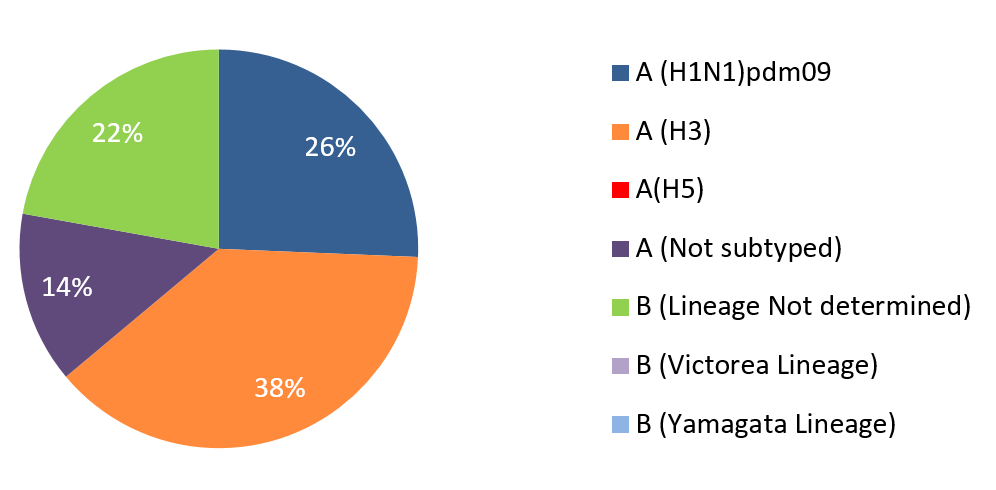In the WHO Eastern Mediterranean Region, influenza activity is still low in the month of September in many countries reporting data to FluNet and EMFLU namely, Afghanistan, Bahrain, Egypt, Iran (Islamic Republic of), Iraq, Jordan, Lebanon, Morocco, Oman, occupied Palestinian territory, Pakistan, Qatar and Saudi Arabia (Fig 1).

Fig. 1. Influenza geographic spread in the Eastern Mediterranean Region, September 2018
Influenza activity by subtype
• In September 2018, no new cases of human influenza A(H5N1) were reported in Egypt.
• In the northern Africa influenza transmission zone, Egypt reported co-circulation of all seasonal influenza viruses with detections of predominantly A(H3) virus.
• In the western Asia influenza transmission zone, Qatar and Saudi Arabia reported co-circulation of all seasonal influenza viruses; while in Oman A(H3) virus was only detected. Bahrain reported sporadic detection of influenza A(H1N1)pdm09 and A(H3); Jordan and Lebanon reported circulation of sporadic cases of the influenza A(H3). Finally, Iraq and occupied Palestinian territory reported no activity.
• In southern Asia transmission zone, Iran (Islamic Republic of) reported circulation of influenza A(H1N1)pdm09 and A(H3), while Afghanistan and Pakistan reported no activity.

Fig. 2. Weekly positive cases of influenza by subtype, Epi week 39/2017-2018
Circulating influenza viruses by subtype
• During September 2018, national influenza centres and influenza laboratories in the Region tested a total of 2898 specimens for influenza viruses of which 230 tested positive (8%).
• The average percentage of positivity rate per country is 7%, with highest positivity rate recorded in Bahrain, Oman and Qatar.
• Of the viruses tested; 179 (78%) were influenza A viruses, including 59 (26%) influenza A(H1N1)pdm09 virus and 88 (38%) were influenza A(H3) virus. Influenza B (Lineage Not determined) virus accounted for 51 (22%) (Figure 3).





